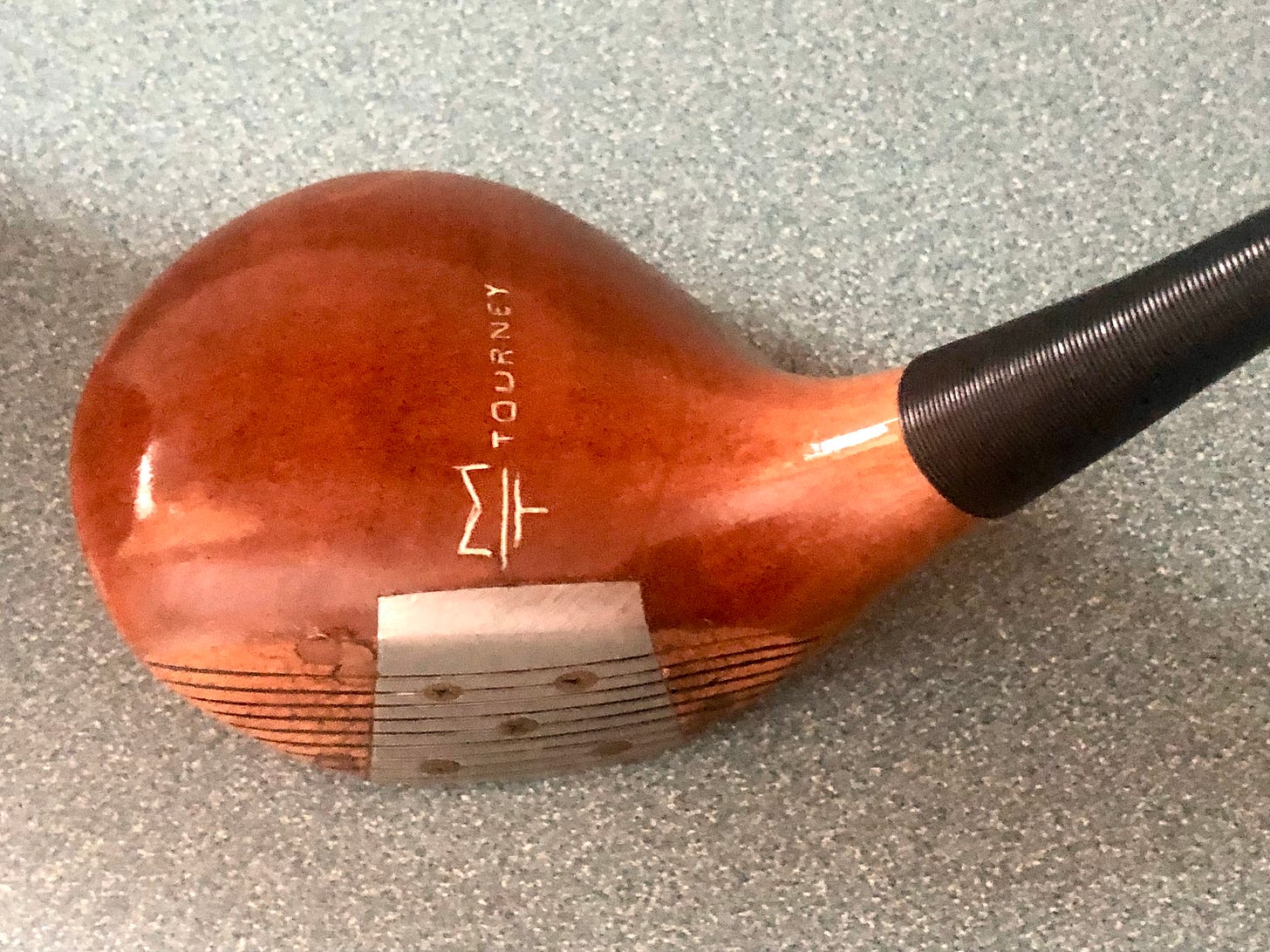As someone who for the last couple of years has played most of his golf with persimmon woods, I was delighted to see Rory McIlroy mess around with an old-school club this week on the eve of the Genesis Scottish Open.
McIlroy’s numbers—as measured by technology that would have seemed Jetsonian in the decades when everyone played with wooden-headed drivers—weren’t surprising.
Ignore the nitpicks about sample size, wind, you-name-it. Never mind that McIlroy was using his current model of ball instead of the type that most elite golfers utilized throughout the 20th century.
The fit, strong, pure-swinging McIlroy carried the ball 256 yards with the wooden club, 61 yards shorter than a drive he hit from the same tee with his high-tech gamer. With persimmon, the shot totaled 286 yards, well short of the 330 yards he got with the 2023 big stick. (McIlroy leads the PGA Tour in driving distance this season with a 327.6-yard average.)
Some of those who are against a ball rollback at the elite level will look at the anecdotal evidence of McIlroy’s experiment and say, “See, it’s not the ball’s fault.” No, of course the construction of the modern ball isn’t the only reason skilled golfers hit the ball so far. As McIlroy demonstrated, it’s the size of driver clubheads and what their made of, the material and (reduced) weight of shafts compared to yesteryear, and how technology can perfectly match a golfer to the right combo of space-age stuff. Throw in tightly mown fairways and, yes, swings and bodies groomed to capitalize on the balls and clubs being manufactured, and you have the recipe for where top-level men’s golf is today. Doing something about the ball—as the USGA and R&A have proposed in a Modified Local Rule for elite play—is at least some support in a dam that began to be breached long ago.
It is unrealistic to think that golf, in the main, would ever return to wooden clubheads. But seeing McIlroy swing one for kicks, it makes you think about Major League Baseball and how it never allowed aluminum bats, long a staple in lesser levels of that sport. If golf’s governing bodies had put a governor on ginormous drivers and their springy faces, we might not have gotten quite to this point at the elite male level even with multi-layer, solid balls.
Some make the argument that professional golf would lose some of its appeal if the best in the world began to hit the ball shorter distances, if a long drive was once again roughly 290 yards instead of 340 yards, or what we roughly saw in the McIlroy experiment. But were any of the spectators gathered by the gallery ropes in Scotland as McIlroy busted one with a persimmon-headed, steel-shafted driver bored? Unimpressed? Annoyed that they could follow the ball from takeoff to landing? Disappointed at the satisfying “thwack” of impact? I don’t think so.
In the novelty of that beautiful moment as McIlroy connected with the past, there was an important message about the future, too, for anyone of a mind to see it.
My 1968 MacGregor driver, persimmon with an aluminum insert. (Bill Fields photo)
My present includes deciding whether to use a persimmon driver crafted in the early 1950s, or in 1959, the year I was born, or in 1968. I’ve had the “newest” one, a MacGregor MT Tourney, for 50 years, and despite being refinished the repaired face shows its age—I haven’t always hit it on the screws! (Unlike Jerry Pate, who used a similar model to win the 1976 U.S. Open.)
On my Sunday best, I can fly a ball within a short pitch shot of what McIlroy did with wood, something that’s not remotely close to happening using current technology. The best always separated themselves from the rest, but the gap—now massive when it comes to distance—wasn’t as extreme before technology became everything. And if somehow drivers returned to being smaller, the sweet spot mattering the way it used to, the most skilled golfers, such as McIlroy, would shine even more brightly. Modern equipment-making might be rocket science but figuring out what’s going on sure isn’t.




Great perspective. Playing persimmon and blades somewhat regularly this year, I can attest to the thrill it gives to hit the older technology well on occasion. There’s something that feels almost more pure about it, both in terms of the strike and the almost spiritual sense that it conveys. One of the many fascinating aspects to the game is the thread from the modern to the present, and we’re fortunate to be able to live and play in a time when your MacGregors and my Haig Ultras remain eminently playable. On an even deeper level, and if I recall your article from McKellar correctly, you can probably still picture your dad taking his grip around a similar club just as I can picture mine. Thanks for the writing, Bill. Your dispatches and posts are always a bright spot in the day.